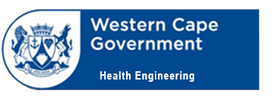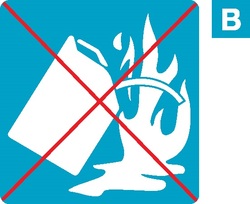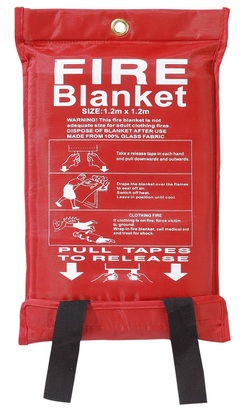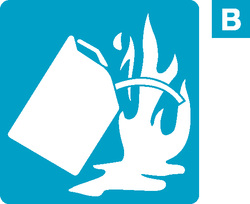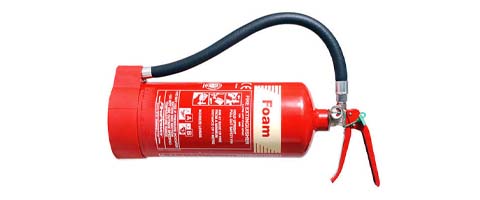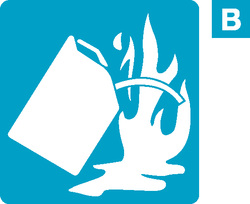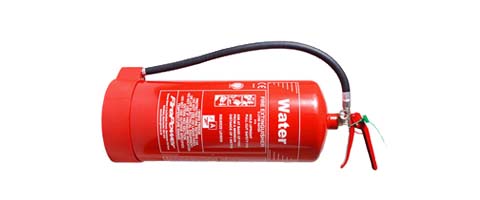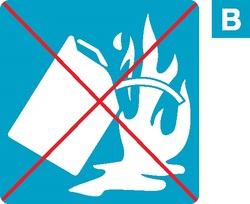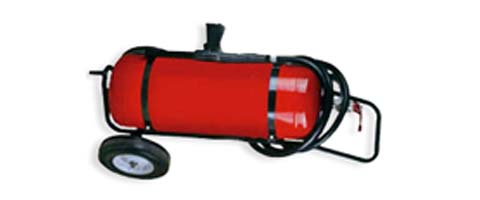Fire Extinguishers and Equipment
The fire fighting equipment in your facility can include various types and sizes of fire extinguishers, fire hose reels, fire extinguishers and fire blankets. The equipment is serviced by a central contract for each district. All equipment must be serviced yearly on or before the service date as specified on the previous year's service label.
Western Cape health facilities primarily use dry powder and carbon dioxide fire extinguishers and at larger facilities, the extinguishers are complimented with hydrants and fire hose reels scattered at strategic locations in the facility. Before operating an extinguisher, always ensure that the extinguisher is appropriate for the type of fire you are planning on extinguishing.
Users should familiarize themselves with where their closest extinguisher is installed and what type of fires the extinguisher can be used on. Check the label of the extinguisher for the class of extinguisher. The most commonly installed fire extinguishers feature one of the following symbols and class letters :
Western Cape health facilities primarily use dry powder and carbon dioxide fire extinguishers and at larger facilities, the extinguishers are complimented with hydrants and fire hose reels scattered at strategic locations in the facility. Before operating an extinguisher, always ensure that the extinguisher is appropriate for the type of fire you are planning on extinguishing.
Users should familiarize themselves with where their closest extinguisher is installed and what type of fires the extinguisher can be used on. Check the label of the extinguisher for the class of extinguisher. The most commonly installed fire extinguishers feature one of the following symbols and class letters :
|
Class A fire extinguishers feature a letter A in a triangle and/or a picture of a trash or wood fire. These extinguishers can be used on material fires.
|
Class B fire extinguishers feature the letter B in a square and/or a picture of a fuel can on fire. These extinguishers can be used on flammable liquids.
|
Class C fire extinguishers feature the letter C in a circle and/or a picture of a plug socket on fire. These extinguishers can be used on electrical fires.
|
It is important that all staff are confident when using a fire extinguisher and training drills should be held often to ensure continued readiness. The focus during an actual emergency is staff and patient safety. If you are not confident that you can extinguish or slow the spread of the fire safely, try to isolate the area by closing windows and doors and immediately evacuate the area.
REMEMBER P.A.S.S.
|
If you would like to have the staff at your facility trained in fire prevention and fire fighting, kindly contact us to arrange this. Please include the amount of people who need to be trained. This should be limited to kitchen staff, technical staff and assigned fire and floor marshals. When training of this staff is complete, they can in-turn provide general training to the remaining staff on the premises. Engineering may also be able to provide expired extinguishers to use in live training exercises.
Dry Powder Fire Extinguishers
|
Carbon Dioxide (CO2) Extinguishers
|
Fire Hose Reels
|
Fire Hydrants
|
Fire Blankets
|
Other Types of Equipment
Foam Extinguishers
Foam extinguishers are almost exclusively used at helipads or vehicle parking buildings. These extinguishers can be used on Class A and Class B fires and are not suitable for electrical fires.
|
Water Extinguishers
Water extinguishers are normally installed at high volume storage areas but are not widely utilized in health facilities in the Western Cape. These extinguishers can be used on Class A fires only.
|
Fire Fighting Trolley
Trolleys usually have a powder fire extinguisher mounted to a trolley frame to enable easy transport. These trolleys are usually used at Helipads and can be used on Class A,B and C fires.
|
